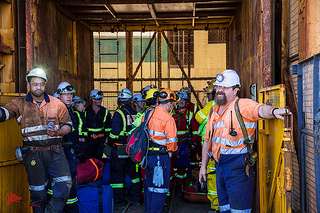Mining linked to regional violence spike

Men and women are more likely to be assaulted in a WA mining town than in regional towns with more diversified industry.
The research by Curtin University found women in 20 regional towns where mining was the primary source of employment were 64 per cent more likely to face assault, either from a partner, family member or member of the general public than in other regional centres.
This includes a 136 per cent increased risk of sexual assault.
The study compared locales such as Coolgardie, Kalgoorlie-Boulder, Meekatharra, Port Hedland and Roebourne with 115 rural non-mining towns, accounting for most of rural WA's estimated 750,000 people.
It drew on WA Police crime data from 25,877 assaults in 2008-2009, including demographic detail.
The research controlled for Drug and Alcohol Office data on alcohol consumption per population and number of licenced drinking outlets in each town to see if alcohol was the driver of the violence.
Curtin University National Drug Research Institute researcher William Gilmore says modelling showed alcohol was not a driving force.
"Alcohol availability across all regions of WA was accounted for in the analysis and the increased risk of assault in mining regions, particularly for women, remained," Mr Gilmore says.
"This is not to say that alcohol is not a problem in mining regions, but there may be other risk factors that contribute to the increased risk of violence in these areas."
Don't blame the FIFOs
The blame cannot be placed on the influx of high numbers of Fly-in Fly-out (FIFO) workers either, as the study found men in mining towns had a 64 per cent higher risk of being assaulted by a family member compared to non-mining towns.
As FIFOs do not bring their spouses or families with them, they cannot be counted in this data.
However, that does not let FIFOs off the hook completely, as non-domestic assaults were equally high in rural mining and non-mining communities.
The researchers suggest mining-town assault numbers could be higher too, as companies and mine sites may deal with altercations internally and not through police.
Mr Gilmore says the findings should spur further research.
"This [study] confirms anecdotal evidence that mining regions are not as safe as other parts of the state," he says.
"Mining communities appear to present a special case for the management and reduction of violence.
"Public health and safety initiatives should seek to identify and address modifiable risk factors which may be independent of alcohol use."
More information: "The Wild West: Associations between mining and violence in Western Australia." Australian Journal of Rural Health. doi: 10.1111/ajr.12228
















